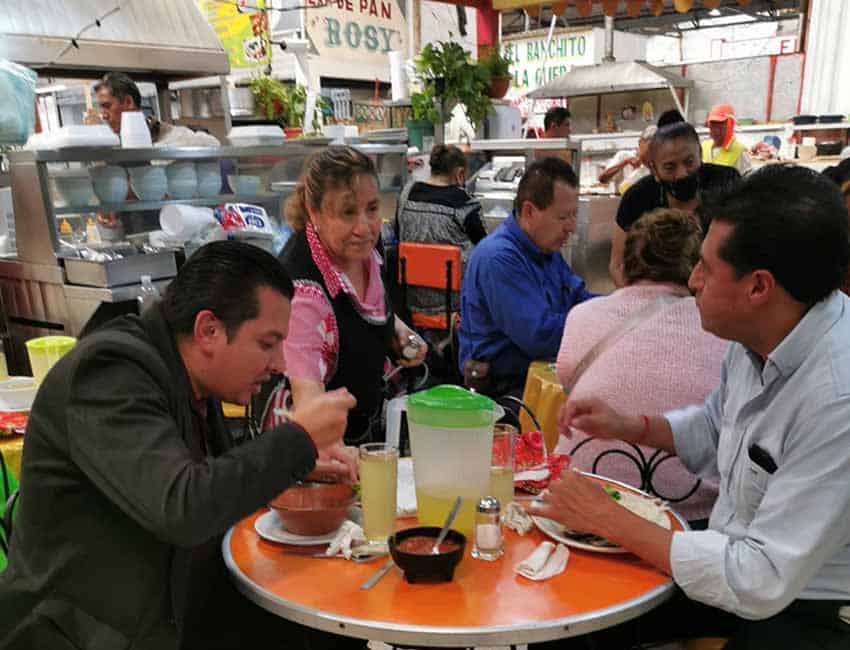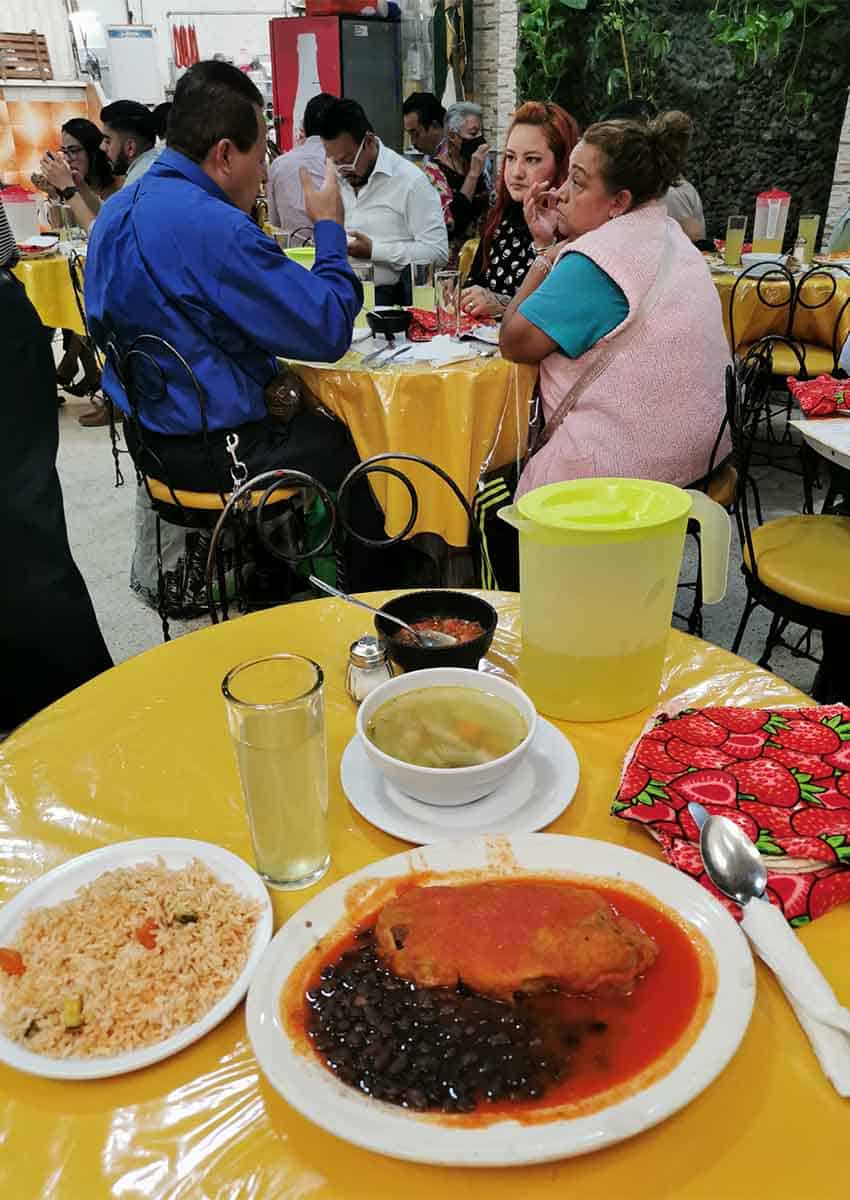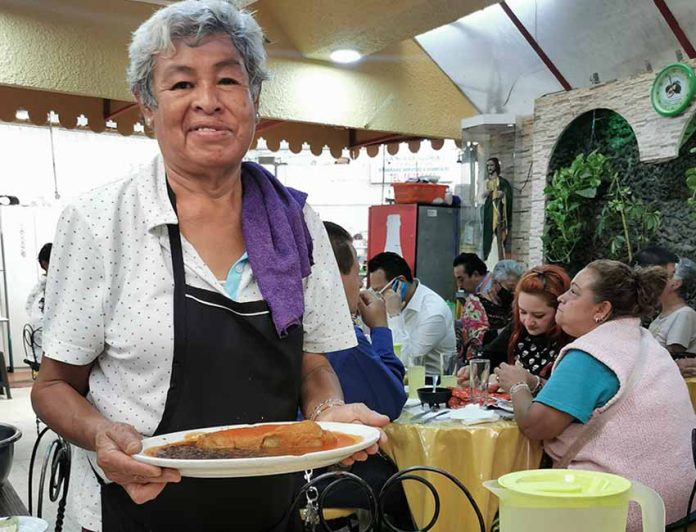I’m sitting on a plastic chair on Regina street in the central historic district of Mexico City, eyeing a handwritten menu with the food of the day scribbled out — as I’ve done hundreds of times before. El Centro is the heartbeat of the biggest city in North America and is flush with a seemingly unlimited number of options for stuffing your face with delicious Mexican (and foreign) cuisine.
But despite the choices, I find myself returning, again and again, to eat at the same humble establishments that prepare a cheap, home-cooked meal in a style known as comida corrida.
Comida corrida, a Mexico City tradition, is food made by the people for the people, and over the past seven years as an expat in the capital, this comfort food of sorts has become my favorite meal.
Translated roughly as “food on the run,” it was born in the late 19th century, in the days of President Porfirio Díaz, during the city’s urban expansion. With the rise of factories in Mexico City, workers from places on the outskirts of the city — places like Mixcoac, Tacuba and Narvarte — found themselves too far from home to go there for lunch and needed something hearty, cheap and quick to eat during their lunch break. Local women began selling them homemade meals out of inns (fondas), their homes or anywhere they could set up a small restaurant.

The three-course meal consisted of a “wet soup” (usually a chicken consommé or tortilla soup), a “dry soup” (rice or pasta) and a protein — a thin slice of steak, breaded chicken or another traditional dish that met the requirements.
There are still thousands of traditional comida corrida joints around Mexico City (and throughout Mexico) set up in markets, booths, inns, homes and more traditional restaurant spaces that vary in size, ambition and ambiance. I have a favorite place that seats 12 and another that can accommodate 100–150 patrons. I like one spot that’s housed in an 18th-century colonial building and another that’s in the San Juan Market in Mexico City’s center, where you sit at long benches alongside people from the community.
Today, my options are as follows:
- 1st plate: Pumpkin flower soup or chicken consomé.
- 2nd plate: Rice or spaghetti with white sauce.
- Main dish: Stuffed chiles, breaded beef, chicken with mole sauce, enchiladas with green, red or mole sauce), or shredded beef with beans.
Before I order, the waiter brings a pitcher of agua de sabor (flavored water) and a glass. The drink is tamarind water, but on other days it could be horchata, jamaica or any of the hundreds of homemade drinks concocted from fruit and herbs common in Mexico. He also brings hot tortillas, a bowl of limes and two different homemade salsas. Nearly all restaurants in Mexico make their own sauces and drinks and many have someone pressing tortillas by hand all day.
I choose the consomé de pollo, and a few moments later, when a moderately sized bowl of chicken soup arrives, I take a tortilla and spread a thin layer of salsa verde on it, squeeze lime in the middle, then roll it up and dip it into the broth. Rice and a fried egg is my second dish, and for the main plate, enchiladas con mole.
The sauce with pre-Hispanic roots made from chiles, nuts, chocolate, fruits, herbs and spices is tough to pass up. Today, the enchiladas are no disappointment, and by the time I finish my meal, I’m satisfied and ready to get back to work. And the total cost? Sixty pesos, or about US $3.
Unlike American fast food, a style of dining also meant to save money and time, comida corrida is a home-cooked meal, with everything prepared in-house, usually by a family. Often three or four generations work together — a grandmother cooking on a grill, her daughter pressing fresh tortillas on a back table, her son or an uncle taking an order and kids in the back playing.

Seldom does a comida corrida restaurant scream hip or cool. No company soundtrack, uniforms or corporate airs. Maybe a TV in a corner with a telenovela, the news or a futbol game and a few posters of Mexican celebrities, saints and pictures of the family hung on the wall.
These places are not run-down but cozy, humble and familiar. Their goal is not to make a million dollars, start a franchise or get a magazine to write them up. The goal, from what I can see, is to serve quality food at a price people can afford.
By eating comida corrida, I’ve learned to distinguish all sorts of Mexican dishes, developing a deeper understanding of the country’s flavors. I’ve learned to differentiate sauces made from chile de árbol, jalapeños, serrano, chipotle and habaneros. I’ve learned how to order cooked bananas on top of my rice and which flavored waters are my favorite — maracuya (passion fruit), chia con limón (soaked chia seeds water with lime), sandía (watermelon).
And the long, rich history of Mexican and pre-Hispanic dishes contains enough variety that you could eat comida corrida every day (as I almost do) and not have the same dish twice for a month.
While many restaurants in the United States seem focused on creating menus and environments that are “new” and “original,” the cooks at comida corrida joints are content to prepare time-tested dishes people know, love and expect in an environment that is like their home. And the ritual of taking a break in the middle of the day to eat a hot meal sets the rhythm of the city and links people together.
Most comida corrida joints buy their fruits, vegetables and meat daily from local markets and butchers, which are often a few blocks away. If they run out of something, they send someone next door to buy it from a neighbor.
And as you eat, musicians arrive to play a few songs on time-worn guitars, then ask for a tip before moving on to the next restaurant. Vendors of all kinds and beggars will pass through, hawking products or asking for change; they’re seldom shooed away unless they’re disorderly, which is rare. In this way, comida corrida restaurants not only serve their patrons but also are a hub for many economies.
When I think about my dining experiences in America that were most like comida corrida, I recall eating at my grandma’s house, the familiarity and coziness of it. And since I grew up in New Jersey, it’s also reminiscent of the casual convenience of a pizzeria — ordering a slice while neighborhood kids fold boxes in the back.
But the truth is, I don’t remember the last time I went into a restaurant in the U.S. that felt like someone’s home, where the food and experience were created by a family — and everything served was affordable.
In the U.S, the closest thing to comida corrida is fast food — a cold experience: plastic trays and booths, microphones and headsets, workers behind the counters with no ties to the business and fluorescent lights heating “food” — nothing like the homeliness of dining at a comida corrida joint.
As we move beyond the pandemic and look to becoming healthier, I wonder what the U.S. could learn from Mexico’s comida corrida tradition about community, affordability and creating spaces to improve our overall well-being.
Nate Kostar writes from Mexico City.
